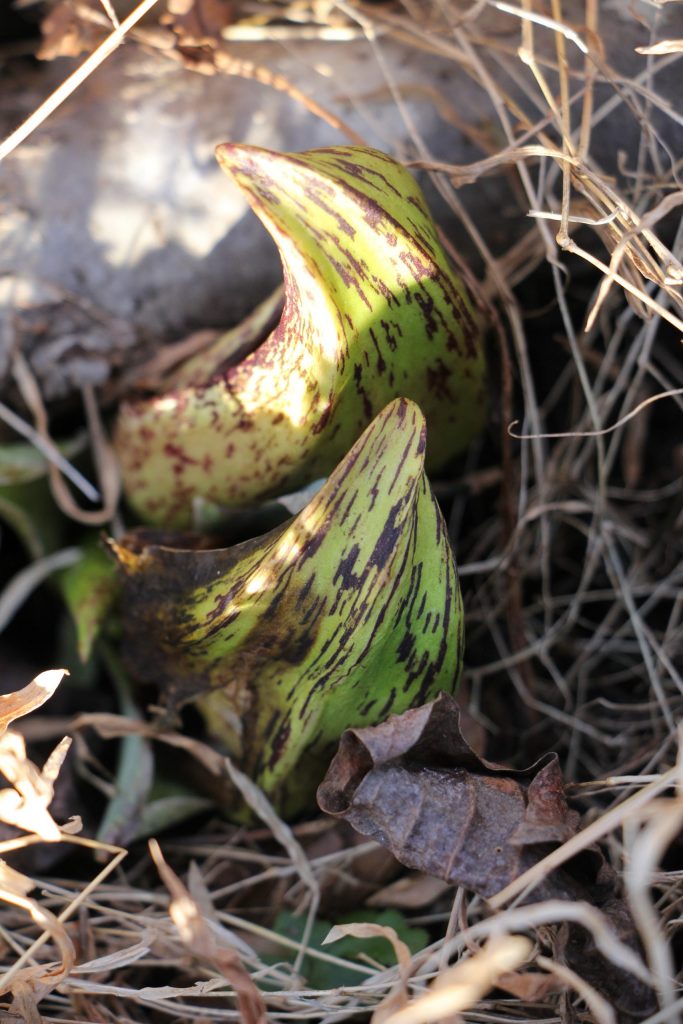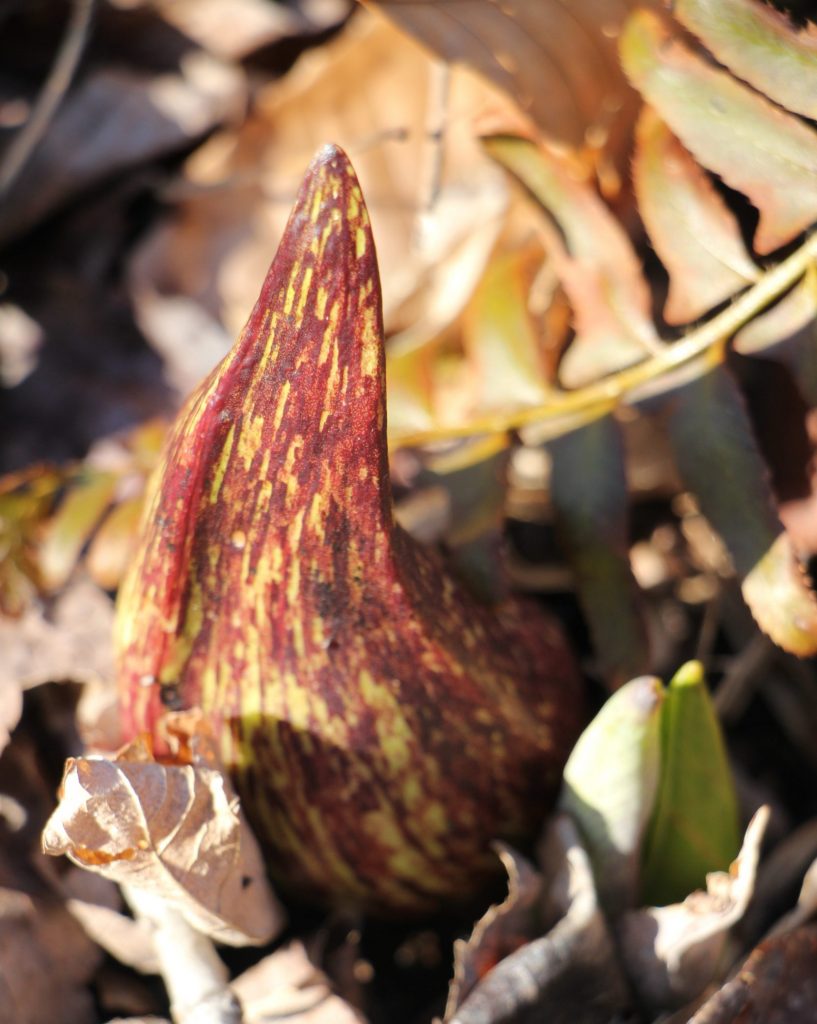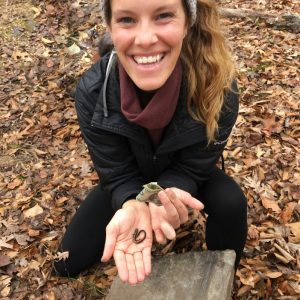
Today is the Spring Equinox and I am so excited to move forward into warmer weather and increased wildlife activity out at the Preserve! This #sciencesaturday, we imitate the seasonal transition, shifting from our winter species to the Preserve’s spring spotlight species. Have you taken any pictures while hiking out at the Preserve of past spotlight species? Don’t forget to upload them to the Bull Run Mountains Natural Area Preserve iNaturalist project.
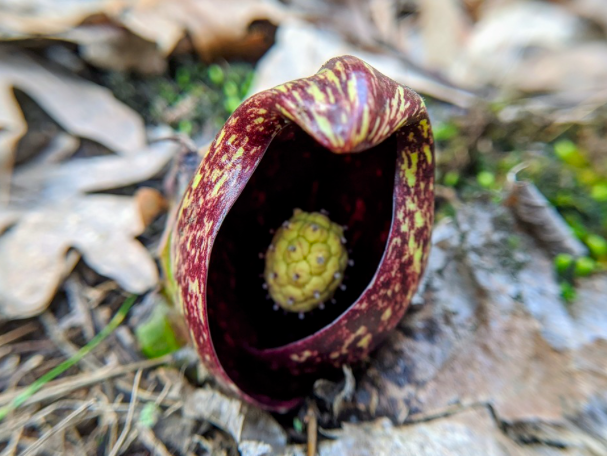
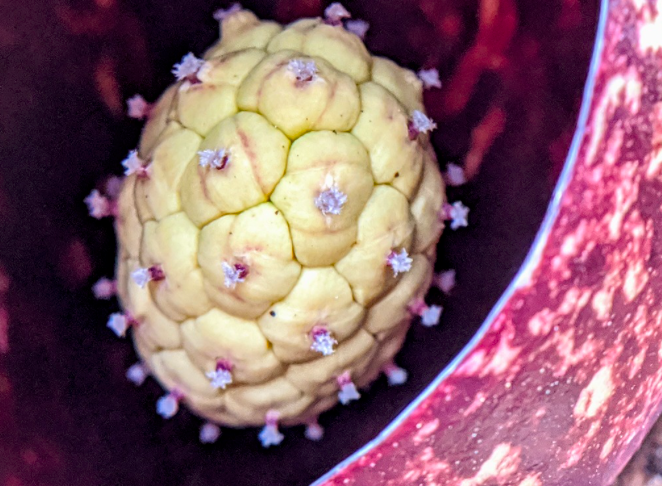
Our introductory species, eastern skunk cabbage (Symplocarpus foetidus), is the first flowering plant at the Preserve. The plants are ephemeral, meaning once the leaves die at the end of summer the plants become dormant until it returns the following spring. Its flowers emerge from the ground in early spring before the leaves. The flowers are made up of two parts: a spathe and a spadix. The spathe, a modified hood-like leaf, surrounds the spadix, a cylindric structure that contains tiny flowers packed together.
Skunk cabbage will attract more than your visual senses with its bright mottled appearance. As its name suggests, this plant is also very recognizable by its smell. When its large cabbage-like leaves are broken or disturbed, it releases a pungent odor that is similar to rotting flesh, or the business end of a skunk. This harmless scent is an excellent way to attract unaware pollinators – flies, ants, and beetles. Skunk cabbage tricks them by mimicking the scent of a their preferred food. The bugs that crawl into the plant get a bonus beyond the animal carcass zombie aroma: a heated home!
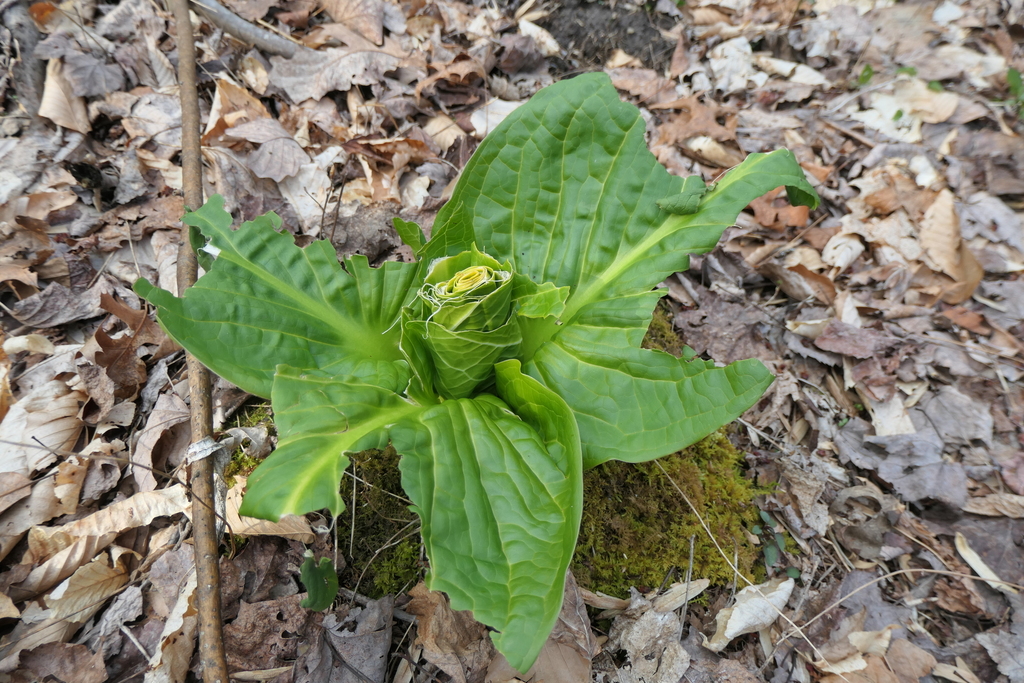
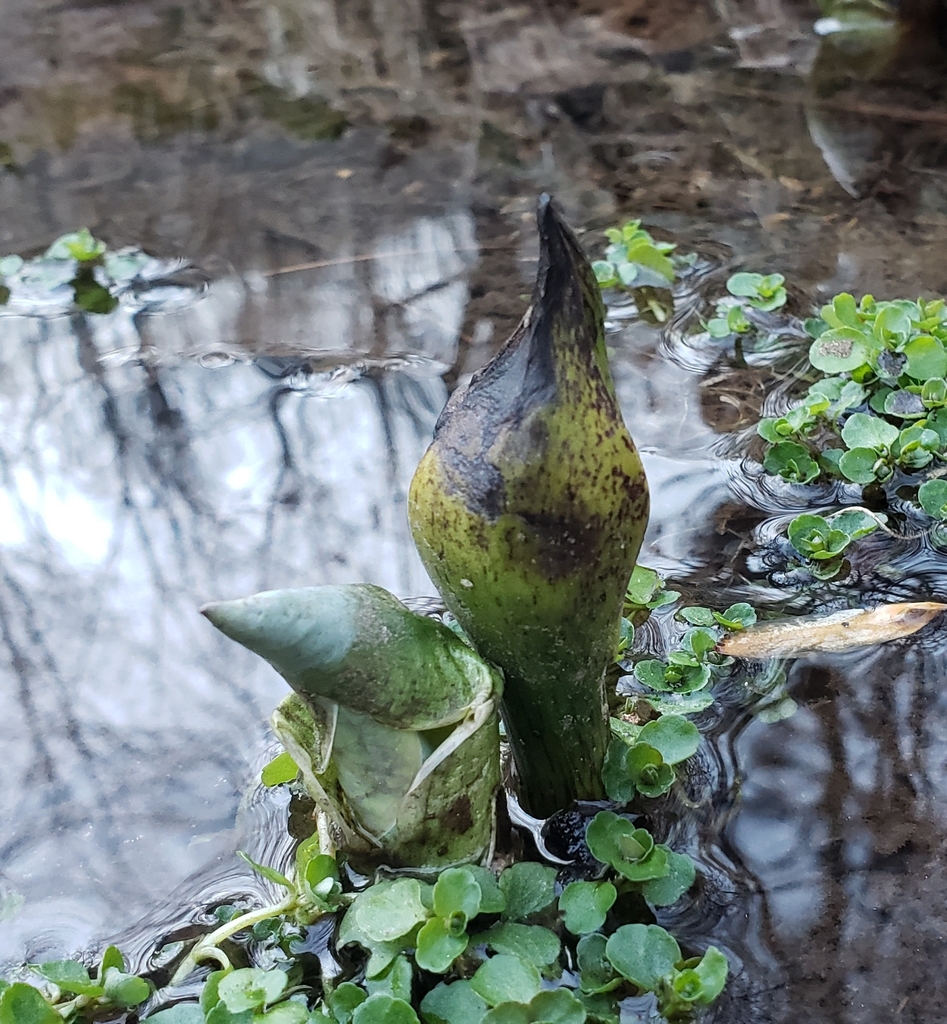
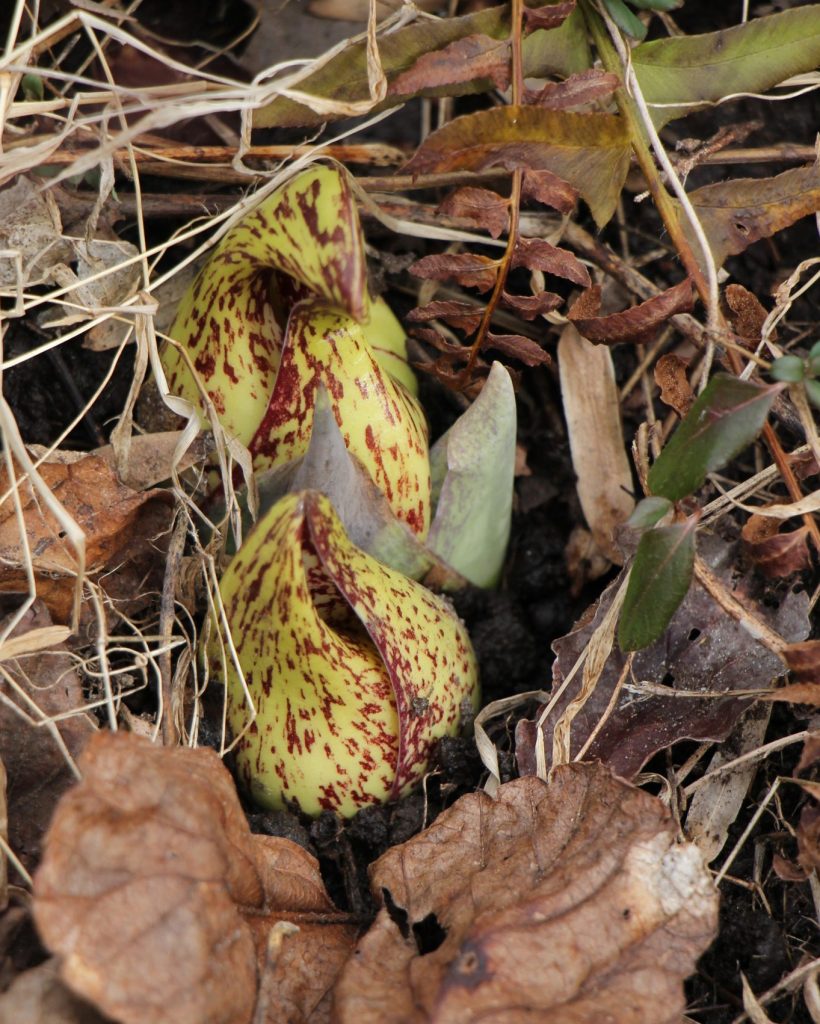
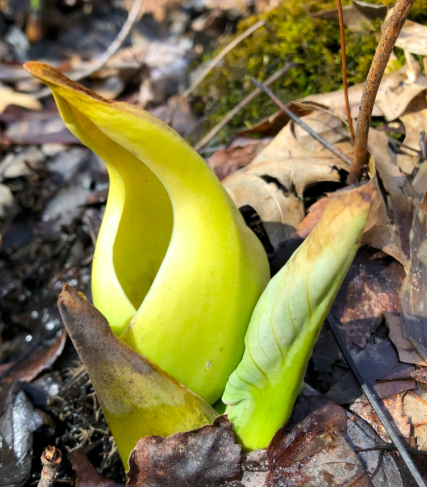
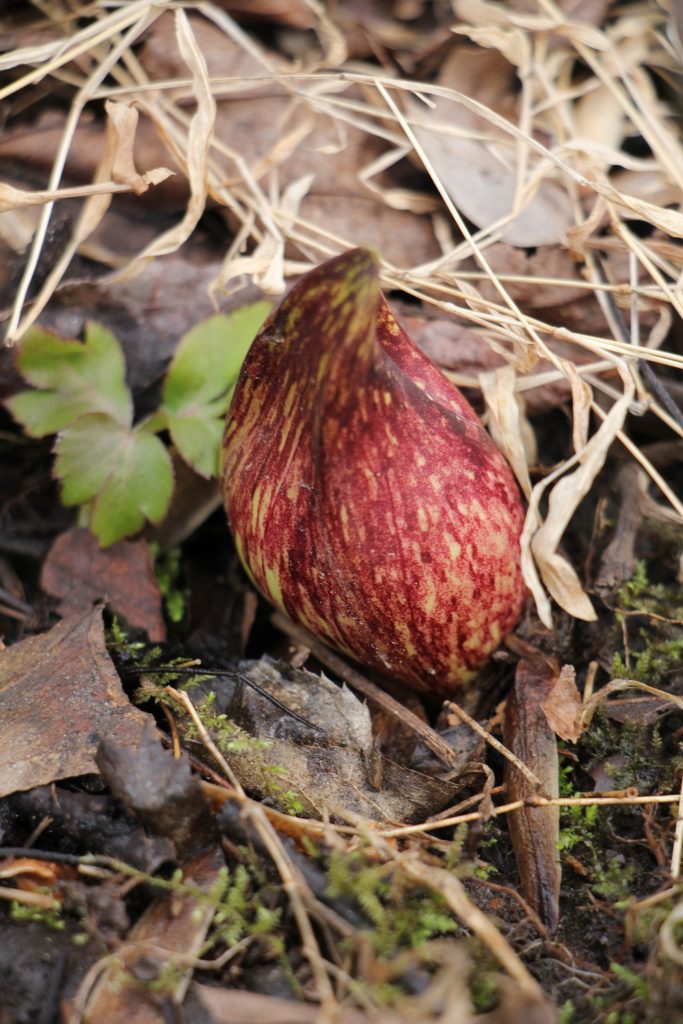
If you follow our social media, you may have seen a recent post about another special characteristic of this unique plant. It is one of a few that can regulate its temperature and generate heat through thermogenesis. Using cyanide-free cellular respiration, the plant releases stored energy from its roots that keeps it toasty at up to 70 degrees Fahrenheit – hot enough to melt any ice or snowfall during winter. That heat may also spread the smell of the flowers farther, enticing pollinators to visit. Once the pollen is released during warmer weather, heat production is no longer necessary.
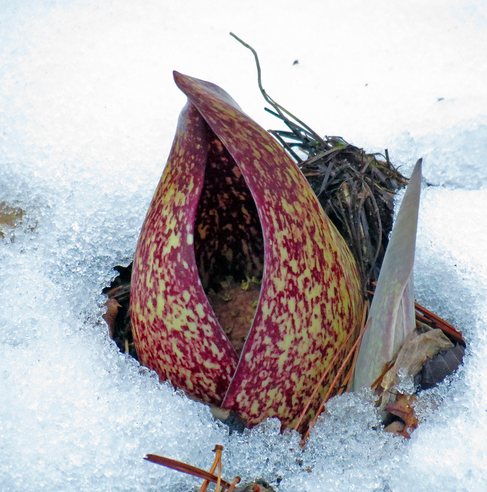
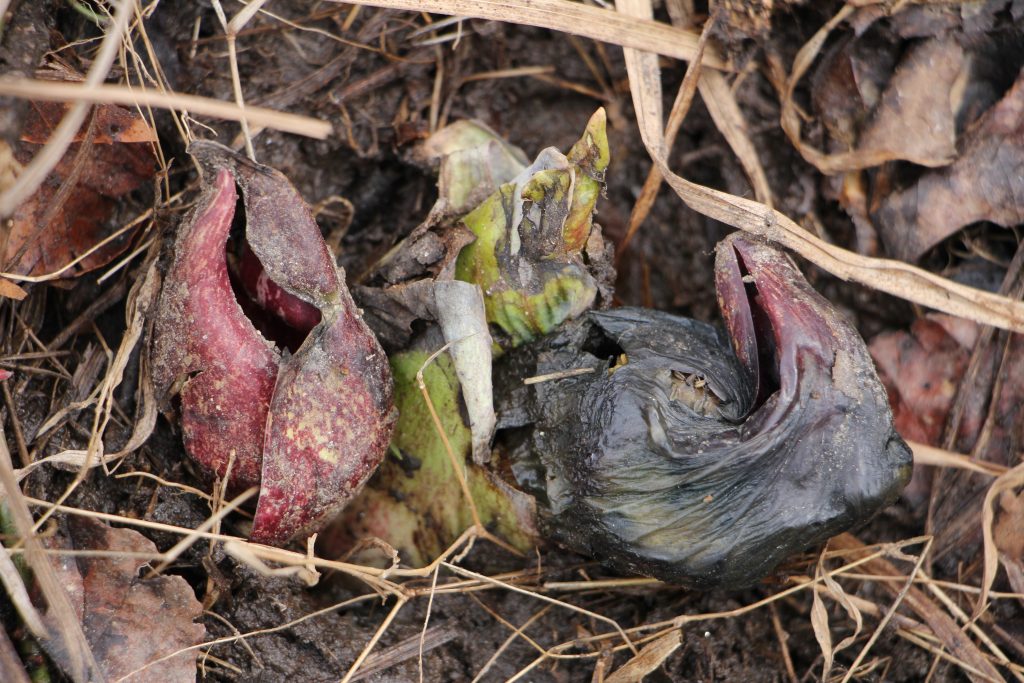

After pollination, the flowers produce a dark purple/black fruit which ripens once the rest of the plant is dormant. This fruit also carries a distinctive smell as it matures, just like the flowers and leaves. The small, hard seeds are spread during animal consumption or heavy rains.
Eastern skunk cabbage grows in nearly any North American east coast soil that remains wet, such as along forest flood plains, creek banks, and wetlands. Each year the plant’s roots contract, pulling it deeper into the earth. These extensive vertical roots can grow over five feet long, making it almost impossible to dig up. If undisturbed, a single plant can live for several decades! To find this harbinger of spring, explore the eastern Fern Hollow loop. Comment below which you used first in locating this incredible plant: either sight or smell.
